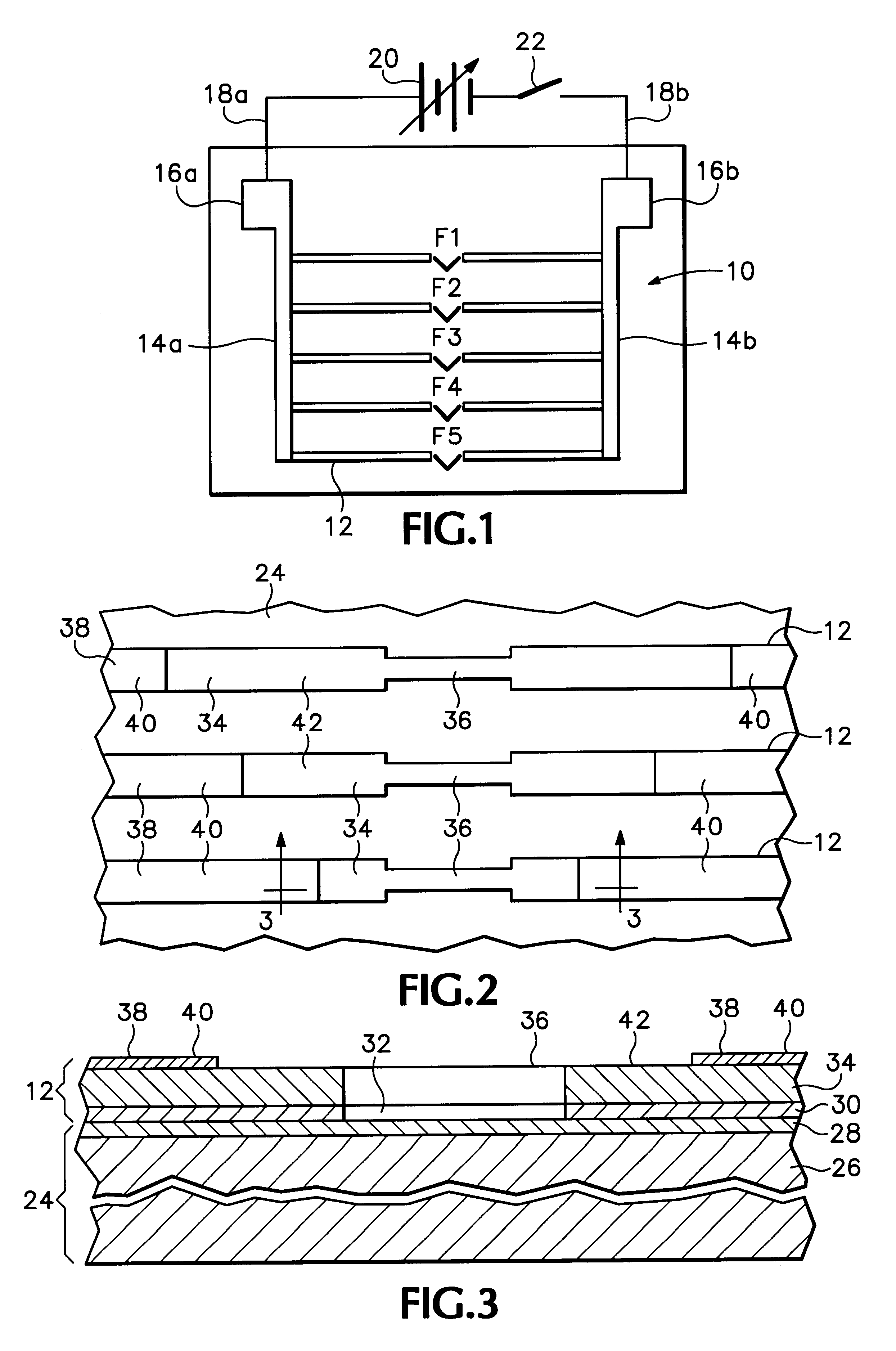Addressable fuse array for circuits and mechanical devices
a fuse array and circuit technology, applied in the field of fuse arrays, can solve the problems of impracticality of using such prior art microbridge fuses for customizing mechanical properties, imposing a large burden on designers and fabricators, and high cost of secondary fabrication steps
- Summary
- Abstract
- Description
- Claims
- Application Information
AI Technical Summary
Benefits of technology
Problems solved by technology
Method used
Image
Examples
third embodiment
A third embodiment is shown in FIG. 8. This embodiment includes the comb drives 106a and 106b and the masses 102a and 102b as described above in connection with other embodiments. In this embodiment, however, the coupler 122, located between the masses 102 does not include fuse portions. Rather, the coupler 122 is shown fixedly coupled to the masses in an exemplary configuration.
Bias members 116a-116d are coupled between conductive regions 105g and 105h and a frame 142. The frame 142 is also fixedly coupled to the second combs 112 of respective comb drives 106a and 106b and the respective masses 102a and 102b. Electrical pads 102f and 120g are also located on the conductive regions 105g and 105h, respectively and are in electrical communication with the bias members via respective conductive regions 105. As in the above embodiments, the bias members 116 are conductive.
Electrical input pads 120e and 120h are coupled to the first combs 108 for driving the respective comb drives 106a a...
PUM
 Login to View More
Login to View More Abstract
Description
Claims
Application Information
 Login to View More
Login to View More - R&D
- Intellectual Property
- Life Sciences
- Materials
- Tech Scout
- Unparalleled Data Quality
- Higher Quality Content
- 60% Fewer Hallucinations
Browse by: Latest US Patents, China's latest patents, Technical Efficacy Thesaurus, Application Domain, Technology Topic, Popular Technical Reports.
© 2025 PatSnap. All rights reserved.Legal|Privacy policy|Modern Slavery Act Transparency Statement|Sitemap|About US| Contact US: help@patsnap.com



